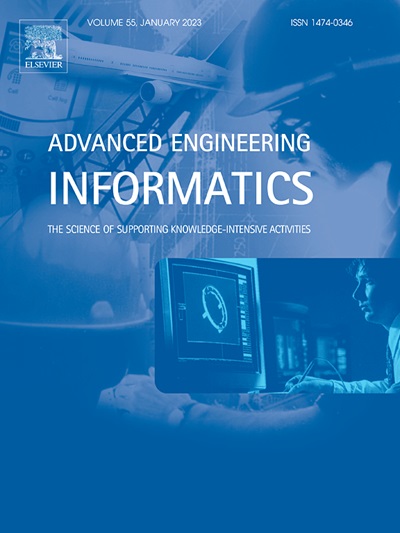基于深度学习和多模态感知的火灾钢筋混凝土结构的知识驱动三维损伤映射和决策支持
IF 9.9
1区 工程技术
Q1 COMPUTER SCIENCE, ARTIFICIAL INTELLIGENCE
引用次数: 0
摘要
快速准确地评估火灾损伤的钢筋混凝土结构对结构安全决策至关重要。为了克服现有二维方法在空间定位和实时部署方面的局限性,提出了一种集成的知识驱动框架。多模态传感与增强型FastSAM-P深度学习网络相结合,可实现自动3D损伤映射。介绍了三个核心创新:(1)可变形空间通道重建卷积(DSCConv)动态调整接收场以捕获细粒度损伤特征;(2)感受野块(RFB)模块优化多尺度特征提取;(3)金字塔池洗牌注意(PPSM)通过上下文融合增强了噪声环境下的鲁棒性。该框架在分割混凝土剥落和钢筋暴露方面达到了92.0%的平均交叉点-联合(mIoU),在GPU上的推断为65.11 FPS。跨五个公共数据集(道路、桥梁、建筑物)的验证确认了泛化能力。在Jetson TX1边缘设备上的部署演示了操作可行性(123.4 ms延迟)。与摄影测量3D重建的集成使损伤定位精度在±15毫米。这种方法建立了从数据采集到决策支持的科学严谨的管道,显著推进了知识密集型工程任务的自动化火灾后评估。本文章由计算机程序翻译,如有差异,请以英文原文为准。
Knowledge-driven 3D damage mapping and decision support for fire-damaged reinforced concrete structures using enhanced deep learning and multi-modal sensing
Rapid and precise damage assessment of fire-damaged reinforced concrete (RC) structures is critical for structural safety decisions. To overcome limitations of existing 2D methods in spatial localization and real-time deployment, an integrated knowledge-driven framework is proposed. Multi-modal sensing is combined with an enhanced FastSAM-P deep learning network for automated 3D damage mapping. Three core innovations are introduced: (1) Deformable Spatial-Channel Reconstruction Convolution (DSCConv) dynamically adjusts receptive fields to capture fine-grained damage features; (2) Receptive Field Block (RFB) module optimizes multi-scale feature extraction; (3) Pyramid Pooling Shuffle Attention (PPSM) enhances robustness in noisy environments through contextual fusion. The framework achieves 92.0 % mean Intersection-over-Union (mIoU) for segmenting concrete spalling and rebar exposure, with inference at 65.11 FPS on GPU. Validation across five public datasets (roads, bridges, buildings) confirms generalization capability. Deployment on Jetson TX1 edge devices demonstrates operational feasibility (123.4 ms latency). Integration with photogrammetric 3D reconstruction enables damage localization within ± 15 mm accuracy. This approach establishes a scientifically rigorous pipeline from data acquisition to decision support, significantly advancing automated post-fire assessment for knowledge-intensive engineering tasks.
求助全文
通过发布文献求助,成功后即可免费获取论文全文。
去求助
来源期刊

Advanced Engineering Informatics
工程技术-工程:综合
CiteScore
12.40
自引率
18.20%
发文量
292
审稿时长
45 days
期刊介绍:
Advanced Engineering Informatics is an international Journal that solicits research papers with an emphasis on 'knowledge' and 'engineering applications'. The Journal seeks original papers that report progress in applying methods of engineering informatics. These papers should have engineering relevance and help provide a scientific base for more reliable, spontaneous, and creative engineering decision-making. Additionally, papers should demonstrate the science of supporting knowledge-intensive engineering tasks and validate the generality, power, and scalability of new methods through rigorous evaluation, preferably both qualitatively and quantitatively. Abstracting and indexing for Advanced Engineering Informatics include Science Citation Index Expanded, Scopus and INSPEC.
 求助内容:
求助内容: 应助结果提醒方式:
应助结果提醒方式:


